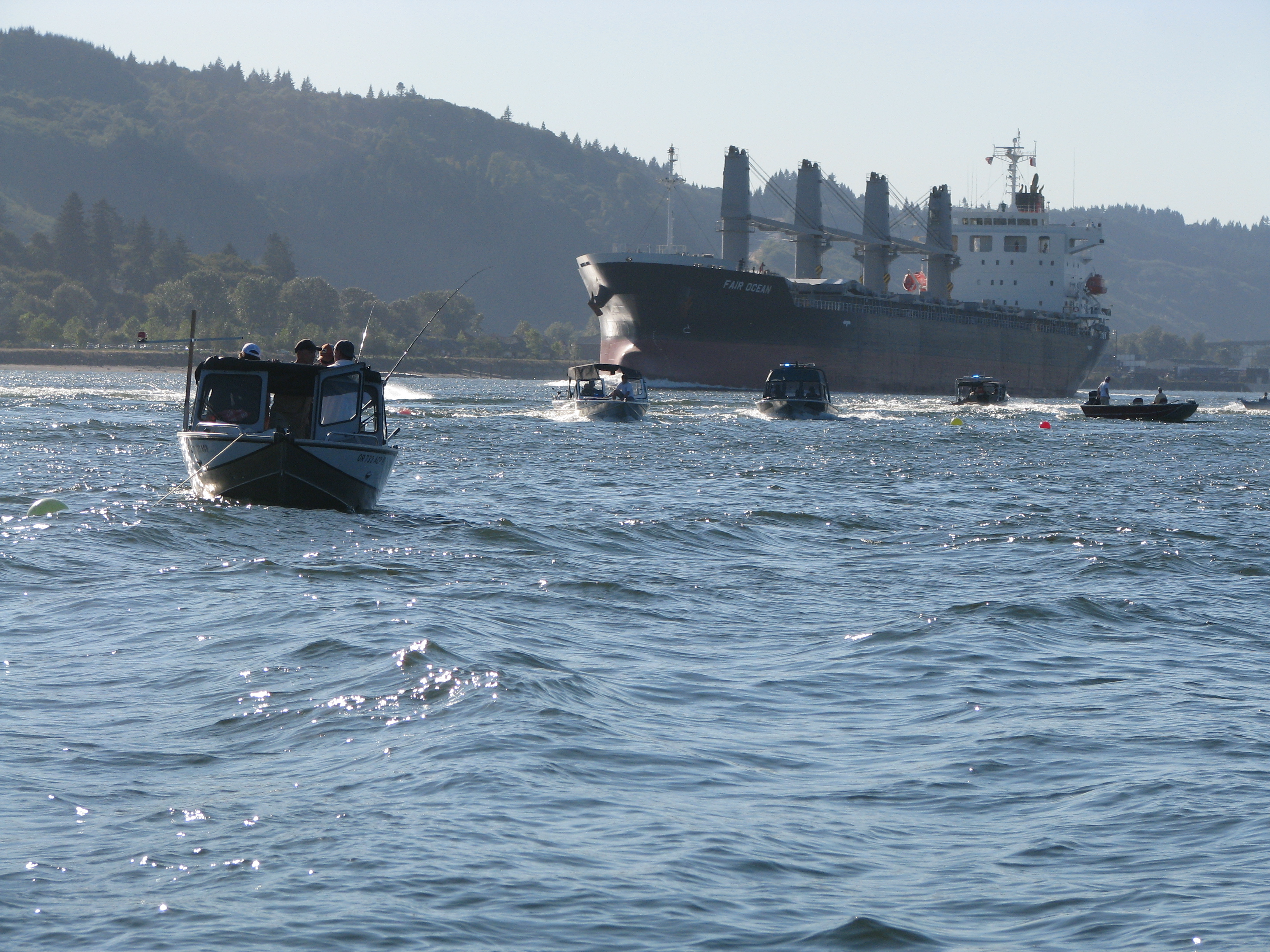When visibility is difficult due to fog or nighttime, or whenever you need to signal your intentions, use sound devices. Know the rules for meeting head-on, crossing, and overtaking situations. The sound producing device may be a whistle, horn, or bell that is audible for 1/2 mile. All vessels on state and federally controlled waters must have a sound producing device to communicate.
Common Sound Signals
Some common sound signals that you should be familiar with as a recreational boater are:
- A short blast, lasting one second.
- A prolonged blast lasting 4-6 seconds.
Changing Direction
- One short blast tells other boaters, “I intend to pass you on my port (left side)."
- Two short blasts tell other boaters, “I intend to pass you on my starboard (right) side."
- Three short blasts tell other boaters, “I am operating in astern propulsion."
Do not get in the way of large commercial vessels. They cannot stop or turn and have a very narrow channel to operate. A ship's captain will sound its horns to boaters to move out of the main shipping channel.
Restricted Visibility
Motorboats Underway: One prolonged blast at intervals of not more than two minutes.
Sailing Vessels Underway: One prolonged blast, plus 2 short blasts at intervals of not more than two minutes apart.
All Boat Types:
- One prolonged blast is a warning signal (for example, used when coming around a blind bend or exiting a slip).
- Five or more short rapid blasts signal danger, or signal that you do not understand or disagree with the other boater's intentions.

Make way for large commercial vessels -who will sound their horns to boaters to move out of the main shipping channel. Anchoring in the main navigation channel is a violation in the Code of Federal Regulations Rule 9.